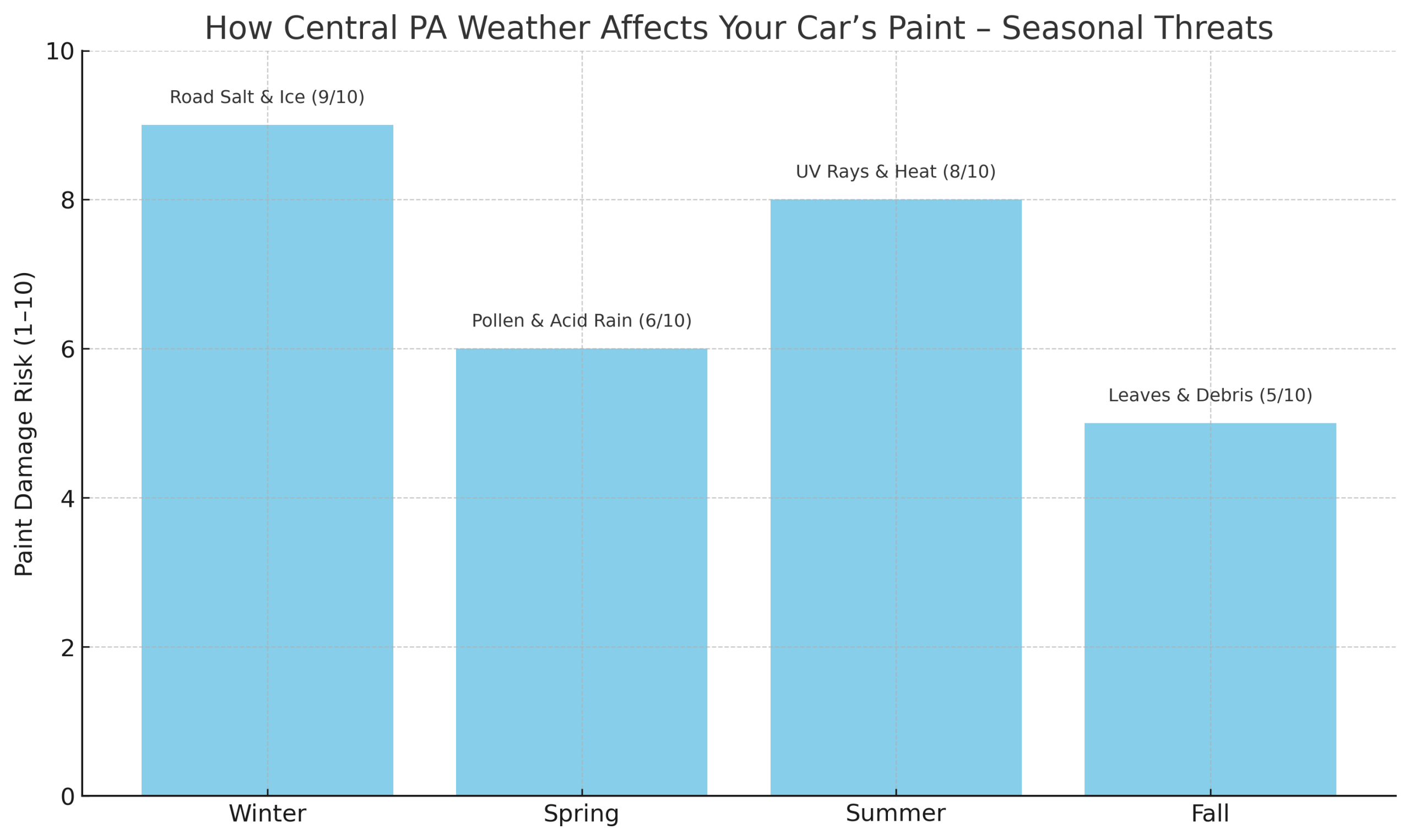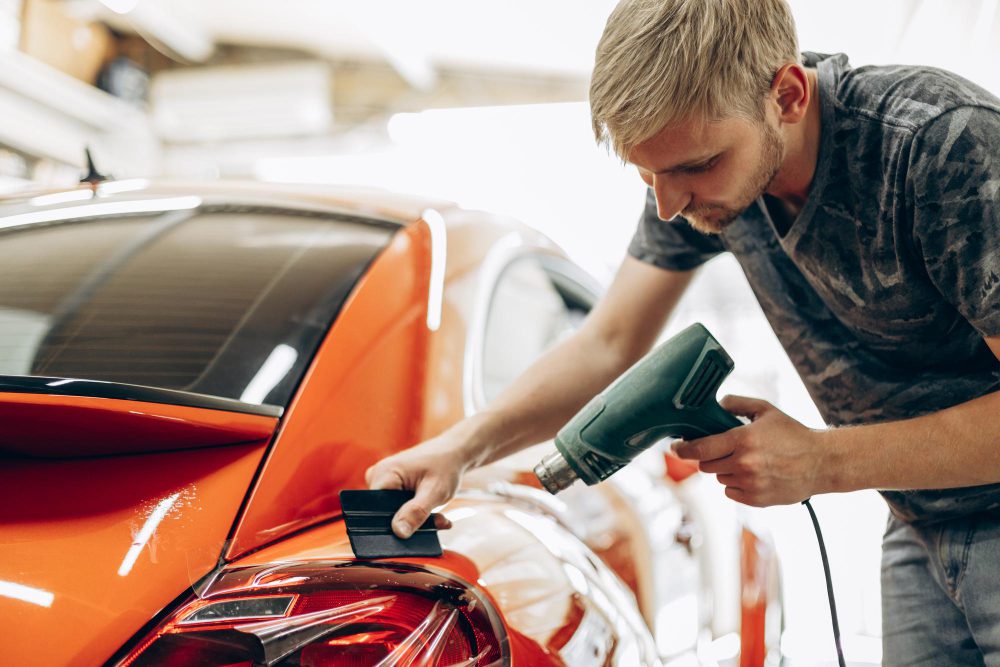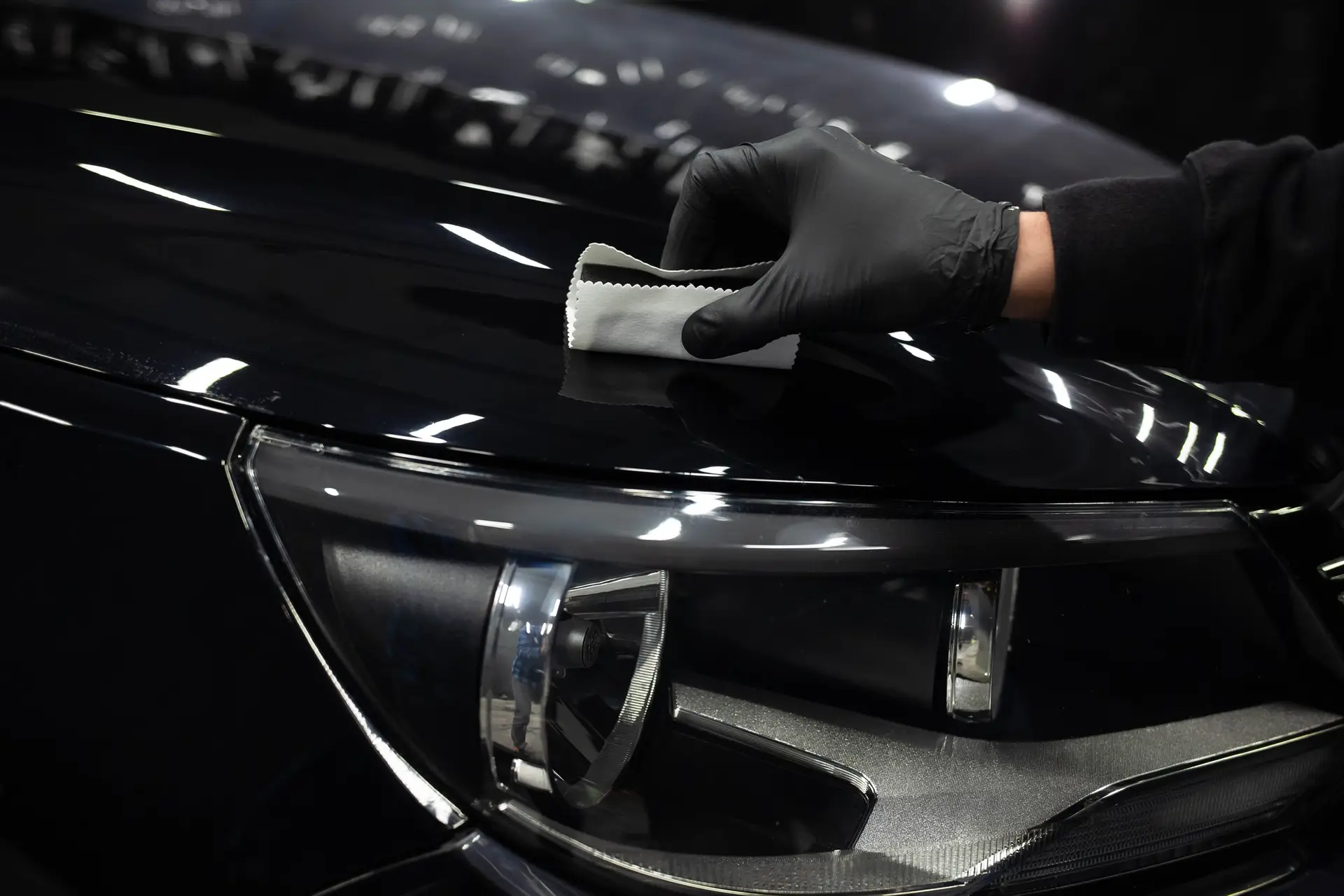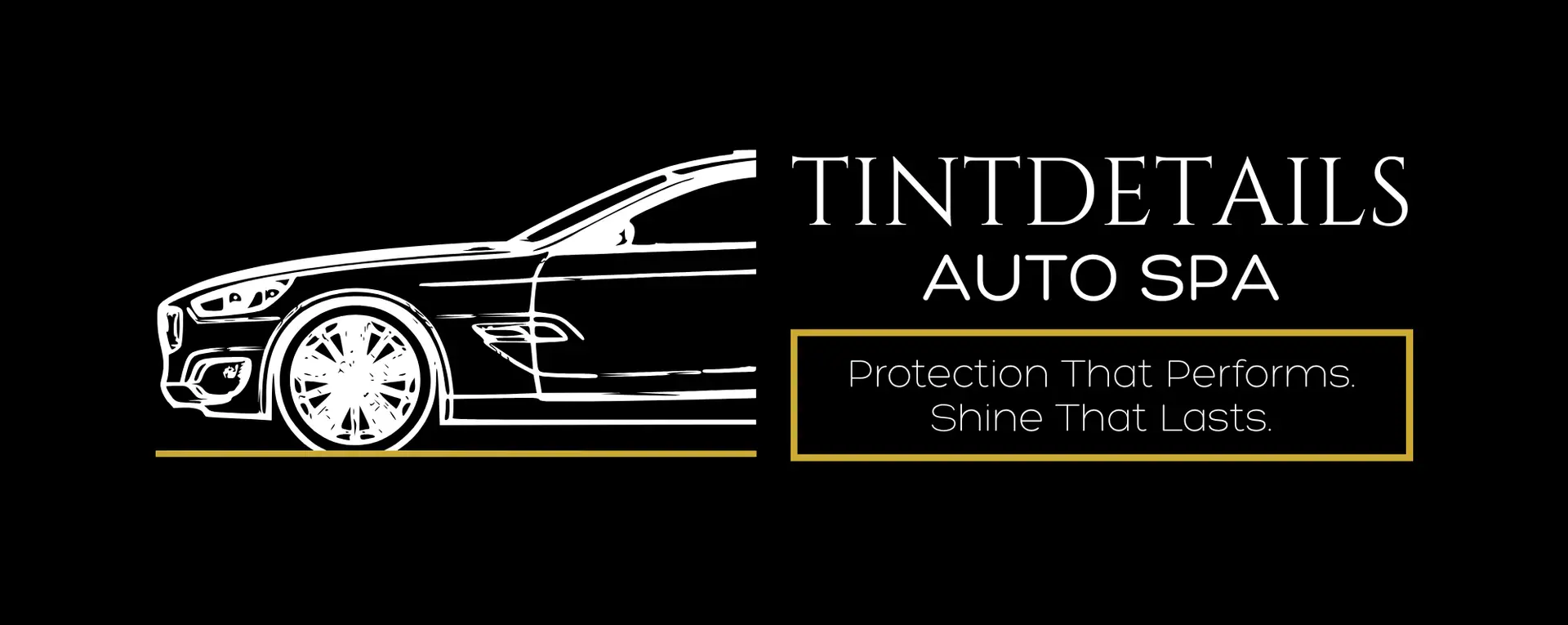Living in Central Pennsylvania means experiencing a full spectrum of weather conditions—from hot, humid summers to icy, salt-laden winters. While these seasonal changes add to the region’s charm, they can be harsh on your vehicle’s paint. Understanding how each season impacts your car’s exterior is crucial for maintaining its appearance and value.

Understanding the Seasonal Threats to Your Car’s Paint
The chart above highlights how each season in Central PA poses unique risks to your vehicle’s paint finish — and why year-round protection matters.
-
Winter (9/10 Risk): Road salt, icy conditions, and freezing temperatures are the most damaging to your paint. Salt accelerates corrosion, especially if left on the surface for days between washes.
-
Summer (8/10 Risk): Intense UV rays and high heat can cause oxidation, fading, and clear coat breakdown. Vehicles parked outdoors face even greater exposure.
-
Spring (6/10 Risk): Pollen is abrasive, and acid rain can etch into your paint’s surface. The combination of moisture and contaminants makes spring a hidden threat.
-
Fall (5/10 Risk): While less severe, autumn leaves and organic debris release tannins and acids that can stain paint and clog drains, leading to hidden moisture damage.
By understanding these seasonal paint threats, you can take proactive steps — like applying ceramic coatings, scheduling seasonal details, and avoiding brush-style car washes — to preserve your vehicle’s shine and value all year long.
Summer: UV Rays and Heat Damage
During Central PA’s summers, prolonged exposure to ultraviolet (UV) rays can cause your car’s paint to fade and oxidize. High temperatures can also lead to the expansion of metal surfaces, making the paint more susceptible to cracking and peeling.
Protective Measures:
- Regular Washing and Waxing: Frequent washing removes contaminants, and applying a high-quality wax adds a protective layer against UV rays. (chemicalguys.com)
- Ceramic Coating: Consider applying a ceramic coating to provide long-term protection against sun damage and maintain your car’s gloss.
- Use of Car Covers: When parking outdoors, especially for extended periods, use a UV-resistant car cover to shield your vehicle from direct sunlight. (endurancewarranty.com)
Fall: Leaves and Organic Debris
Autumn brings falling leaves, which might seem harmless but can be detrimental to your car’s paint. Wet leaves can stick to the surface, and as they decompose, they release tannins and other chemicals that can stain or etch into the clear coat.
Protective Measures:
- Prompt Removal: Regularly remove leaves and debris from your car’s surface, especially from crevices where moisture can accumulate. (realsimple.com)
- Seasonal Waxing: Apply a fresh coat of wax before the fall season to create a barrier against organic acids. (bmw.com)
Winter: Salt and Cold Temperatures
Winter in Central PA is synonymous with snow and road salt. While salt helps in de-icing roads, it accelerates corrosion on your vehicle’s undercarriage and can damage the paint if not promptly removed. Additionally, freezing temperatures can cause the paint to contract, leading to cracks.(ntxcollisioncenter.com)
Protective Measures:
- Regular Washing: Even in cold weather, it’s essential to wash your car regularly to remove salt residues. (ntxcollisioncenter.com)
- Ceramic Coating: A ceramic coating provides a hydrophobic layer that repels water and prevents salt from adhering to the paint. (xptinting.com)
- Paint Protection Film (PPF): Applying PPF to vulnerable areas like the front bumper and hood can shield the paint from chips and salt damage. (prestigeaa.com)

Spring: Pollen and Acid Rain
Spring introduces pollen and increased rainfall, both of which can harm your car’s paint. Pollen can be abrasive, and acid rain can etch into the clear coat, leading to dullness and spots.
Protective Measures:
- Frequent Cleaning: Regularly wash your car to remove pollen and neutralize acids from rain.
- Sealants: Applying a paint sealant can provide an extra layer of protection against environmental contaminants.
Year-Round Tips for Paint Preservation
- Indoor Parking: Whenever possible, park your vehicle in a garage or covered area to shield it from the elements.
- Use of Quality Car Covers: Invest in a high-quality, breathable car cover that offers protection against UV rays, moisture, and debris. (weathertech.com)
Professional Detailing: Schedule regular detailing sessions to maintain the integrity of your car’s paint and address any emerging issues promptly.

By understanding the specific challenges each season presents and taking proactive measures, you can significantly extend the life and luster of your vehicle’s paint. At TintDetails Auto Spa, we offer a range of services tailored to combat Central PA’s diverse weather conditions, ensuring your car remains in pristine condition year-round.
Let me know if you want this


